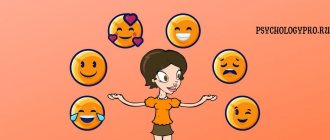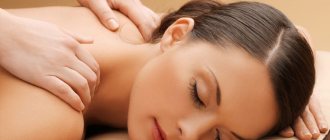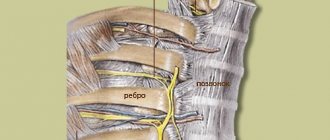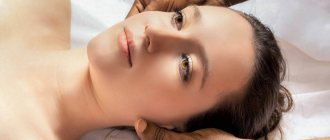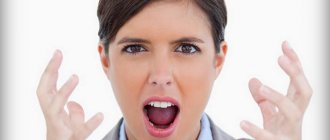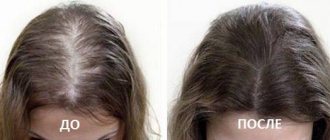One of the methods that a speech therapist uses in his work is probe massage. This procedure applies to:
- stimulation of speech motor skills;
- improving the muscle tone of the articulatory apparatus.
Special probes are used for massage. With the help of these tools, the speech therapist influences the labial muscles and tongue, cheeks, and soft palate by sliding, pressing, moving and rubbing. The described manipulations with individual areas of the articulatory apparatus lead to its improvement and restoration of proper functioning. But in addition to normalizing sound pronunciation, probe massage has a beneficial effect on the nervous system, which additionally stimulates the development of children's speech.
As before any medical procedure, probe massage requires a thorough speech therapy diagnosis, during which the facial and masticatory muscles that are part of the articulatory system, as well as the lips, cheeks, tongue and soft palate are examined. Based on the results of the examination, the location and extent of the lesion is determined, and the time required for treatment is specified. Preliminary diagnostics is also aimed at determining the most effective massage technique for taking into account all the characteristics of the patient and his speech impediment. The time it will take to eliminate deficiencies is influenced by the following factors:
- degree of severity of the defect;
- patient's age;
- his individual characteristics.
It should be noted that a neurologist (children's neurologist) refers to massage courses after a preliminary examination of the patient. And the speech therapist chooses a specific massage technique and its intensity.
What are speech therapy probes?
Probe massage, as the name suggests, is carried out using special metal instruments. They should not be confused with Rau probes, which are used to produce sounds.
The author of the massage complex is E.V. Novikova, who received a patent for her development in 2000.
The set of probes includes 8 main and 4 additional probes with specific functionality. Various types of probe effects on the affected areas stimulate sensitivity and improve connections between peripheral organs and the cerebral cortex.
The tools are used to work with articulatory organs and the forearm. Massage areas are selected individually, depending on what the patient complains about. With the help of probes, you can relax the facial muscles and increase their tone, get rid of spasms. And the impact on the muscles of the leading hand develops motor skills and helps in the formation of handwriting.
Since 2000, technology has not stood still, and some specialists have made their own improvements. For example, famous speech therapists T.A. Vorobyov and O.I. Krupenchuk developed their own version of 9 instruments.
VIVO CLINIC specialists use massage speech therapy probes from all authors in their work, selecting individual sets of tools based on the goals and objectives of correction.
Speech therapy massage for stuttering article
Speech therapy massage for stuttering.
(C 2) Stuttering in children is a serious problem that parents should pay attention to in time and take appropriate measures. (C 3) Stuttering (in medicine the term “logoneurosis” is used) can occur in children at an early age. Treatment of the disease is carried out comprehensively by specialists. Speech therapy, psychotherapeutic techniques, physiotherapy and medication are used.
Speech therapy massage for children who stutter is needed to reduce tension in the facial muscles, improve the functioning of the speech center, and improve overall health.
(C 4) Logomassage is prohibited for herpes, gingivitis, stomatitis, enlarged lymph nodes, skin rashes, inflammation, conjunctivitis, somatic and infectious diseases.
Types of massage for stuttering.
(C 5) Classic massage of certain areas of the body for speech impediment is performed by an experienced massage therapist, using certain techniques and techniques.
What we want to achieve from a massage is muscle relaxation. A person who stutters often has pronounced muscle tone in the neck and upper shoulder girdle. Having achieved relaxation of these zones, the tone of the tongue root decreases and, accordingly, the tone of the muscles of the lower jaw decreases.
A special massage of the head, cervical region, collar area, back, chest and shoulders has a positive effect on articulation. The benefits of this procedure are visible after several sessions, but sometimes 1-2 courses of treatment are required. The advantages of massage for logoneurosis are: activation of metabolic processes in the body; increase or decrease in muscle tone; improving blood circulation; increased metabolism; formation of correct speech skills; prevention of disease relapse; complete elimination or minimization of speech defects.
Acupressure is performed by a massage therapist. The advantages of such an effect on the child’s body include relaxation of the speech center and the removal of excess excitability. With the help of procedures, speech impulses of the nervous system are restored.
The massage course lasts 2–3 weeks without a break. After 20 days it is repeated. After complete recovery, it is advisable to carry out the course for preventive purposes 3-4 times a year.
(C 6) Articulation massage is performed by a speech therapist.
Rules
1.the pace is slow and leisurely;
2. the patient should feel calm, comfortable and warm;
3.massage is best performed with calm music;
4.The massage therapist’s hands should be warm.
Articulatory massage includes segmental and probe massage.
(C7) Segmental massage technique.
We carry out massage along massage lines at the beginning of the course from the periphery to the center.
(C The segmental effect on the baby’s body has a beneficial effect on the entire body. Before the manipulation, the child sits in a position that is comfortable for him, tries to relax. He needs to stretch his arms along the body, completely relax his legs. Also, the massage can be carried out when the baby is sitting in a chair, with In this case, the head should be slightly tilted on a special soft headrest.The specialist performs segmental massage while standing behind the patient’s head.
The segmental effect on the baby’s body has a beneficial effect on the entire body. Before the manipulation, the child sits in a position that is comfortable for him, tries to relax. He needs to stretch his arms along the body, completely relax his legs. Also, the massage can be carried out when the baby is sitting in a chair, with In this case, the head should be slightly tilted on a special soft headrest.The specialist performs segmental massage while standing behind the patient’s head.
(C 9) During the procedure, the basic techniques of classical massage are used: stroking, rubbing, kneading. We do not use vibration. Because it can cause episyndrome. Segmental massage is designed to work out the muscles responsible for the movement of the speech apparatus.
With segmental massage, the speech therapist acts on a specific muscle that is responsible for speech activity. It is advisable to carry out the manipulation daily for 14-20 days. The duration of the course directly depends on the symptoms, age of the patient and diagnosis. One appointment takes from 5 to 20 minutes.
Articulation massage also includes probe massage.
(C 10) Probe massage.
Massage, with the help of which, influencing the muscles of the face and tongue with the help of special exercises and probes.. Can be used in complex therapy in children over 4 years old.
Contraindication is a tendency to epilepsy and seizures. Before starting the massage, as well as at night, you should perform tongue exercises, which consists of several exercises that children perform with pleasure. Charging time is 5 minutes. It can be done several times a day.
(C 11) Massage is carried out along massage lines (at the beginning of the course from the periphery to the center, and then in any direction).
Probe massage of the tongue is carried out over a course of 10-20 days, which, if necessary, should be repeated after 1.5-2 months. If you wish, you can learn how to massage your tongue yourself at home. However, the first sessions should be supervised by a speech therapist.
(From 12)
In what cases will speech therapy probe massage help?
- for motor alalia, when the child has a delay in speech development and needs a powerful push to “start” speech. The purpose of massage is to improve the flow of signals into the brain for the development of affected areas. After the procedure, the patient will begin to make onomatopoeia.
- for dysarthria (pronunciation disorder caused by impaired innervation of the articulation organs), including cerebral palsy. Muscle tone is normalized, the conductivity of nerve impulses improves.
- for stuttering, to reduce the tone of the articulator muscles.
- used in the rehabilitation of lost speech functions in adult patients who have suffered acute cerebrovascular accident. The pronunciation aspect of speech improves, the tone of the affected muscles is normalized, hypersalivation is reduced, chewing and swallowing are improved.
- with hypersalivation (increased salivation) at any age.
- with impaired swallowing and chewing.
- with limited mobility of the tongue due to shortening of the hyoid ligament. For mild impairment, massage will improve its elasticity. If the lifting disorder is more severe, surgical intervention will be required.
- with rhinolalia. Speech therapy massage will smooth out scars that negatively affect the mobility of organs, postoperative sutures, and improve muscle function.
What is dysarthria
This is the name for a speech disorder that occurs when there is insufficient innervation of the speech organs. In this condition, the mobility of the speech apparatus is limited. Dysarthric people speak slurredly; they say about such people: “porridge in the mouth.”
Dysarthria can develop in children as a result of injuries, tumors, neuroinfections and other pathologies of the brain and central nervous system. In childhood, in addition to the pronunciation side, other components of the speech system also often suffer. The baby may have hearing impairments and make mistakes when reading or writing. In adulthood, dysarthria develops after strokes or injuries. In this case, only pronunciation suffers.
There are many forms of dysarthria. Today in the world, most experts use a classification that implies the presence of seven types of this speech disorder :
- Sluggish dysarthria is called dysarthria that occurs as a result of damage to the hypoglossal, glossopharyngeal and vagus nerves. Failure of neuromuscular transmission leads to peripheral paralysis of the articulatory muscles. This type may be accompanied by swallowing disorders and is part of the bulbar syndrome.
- Spastic dysarthria is observed with bilateral muscle paralysis, which develops with bilateral damage to the anterior central gyri. This form is included in pseudobulbar syndrome.
- Unilateral upper motor neuron dysarthria is observed with unilateral damage to the central anterior gyri.
- Ataxic dysarthria develops if the lesion affects the cerebellum or its pathways. With this type of disorder, speech becomes scanned, modulation is disrupted, and the volume constantly changes.
- Hyperkinetic dysarthria is a type of extrapyramidal disorder. The reason for its formation is a disruption of the subcortical nodes, as well as their nerve connections. This dysarthria is a hyperkinesis - a condition when muscle movements are involuntary and sudden. Can be combined with hyperkinesis of various locations.
- The hypokinetic form also refers to extrapyramidal dysarthria, which occurs after damage to the subcortical nodes. Most cases are observed in parkinsonism. Speech is inexpressive and slow.
- Mixed dysarthria is called dysarthria, which develops against the background of multifocal damage to the nervous system. Often occurs as a result of injury. In this case, a combination of various mechanisms of dysarthria occurs.
Dysarthria is diagnosed at the age of five . After a speech therapy examination, a child with symptoms of dysarthria is referred to a neurologist. The doctor, after a thorough examination, will refute or confirm the diagnosis, and also prescribe adequate treatment. In addition to medical treatment, dysarthric patients need psychological, pedagogical and speech therapy assistance.
Dysarthria is a speech disorder that is difficult to correct. The prognosis largely depends on the state of dysarthria and the degree of damage to its central nervous system.
Are there any contraindications for probe massage?
Contraindications can be temporary or absolute.
Temporary contraindications:
- heat;
- poor health, general fatigue;
- nausea and vomiting;
- high blood pressure;
- skin rashes;
- any infectious diseases;
- oral infections, rashes on the oral mucosa (stomatitis, gingivitis);
- dental problems (caries, periodontal disease, etc.);
- viral diseases, such as herpes.
After the disappearance of the above reasons, it is possible to perform a massage complex.
Absolute contraindication:
- all types of epilepsy (massage can cause an epileptic seizure).
Contraindications
It seems that speech therapy massage is such a lifesaver with absolute usefulness and a mandatory result. However, this is not quite true. Parents should know that only a specialist can prescribe this procedure. The speech therapist will check the condition of not only the child’s speech, but also the articulation apparatus. In addition, it is important to know your medical history and undergo an examination by a neurologist.
Speech therapy massage is not indicated in the following cases:
- Infectious and viral diseases.
- Pustular skin diseases.
- Increased body temperature in a child.
- Strict contraindication - episyndrome, history of epilepsy!
- Recent sore throat. Before starting a massage course, you must wait at least 7-10 days after recovery.
How is massage performed?
The massage session is carried out lying down or in any other comfortable position that will allow you to relax as much as possible. In some cases, the mother may be present in the office.
The speech therapist selects methods of influencing the muscles in each case individually, after examining the condition of the articulatory apparatus.
A specialist performs speech therapy massage only wearing special disposable gloves, a medical gown and only sterile instruments . All equipment undergoes mandatory medical sterilization after each lesson.
What you need to know
Despite the fact that speech therapy massage for dysarthria can be performed at home, it should not be done without prior consultation with a speech therapist and neurologist. If you use mechanical influence techniques incorrectly, you can harm a child suffering from dysarthria.
For speech therapy massage to be beneficial, you must follow these recommendations:
- Dysarthria is treated by a doctor. All stages must be supervised by specialists;
- a friendly atmosphere should reign during classes;
- The child should lie down during a speech therapy massage. But in some cases, it is possible to perform exercises while sitting;
- Speech therapy massage will be effective only with an integrated approach. It should be understood that the mechanical effect on the speech muscles must necessarily be combined with work on producing sounds and speech breathing, and the development of fine motor skills.
As a rule, speech disorders in children are diagnosed at the age of five. But if your child is at risk or you notice problems with pronunciation, then you should immediately contact a specialist. After all, the sooner you start speech therapy massage sessions for dysarthria, the more successful the treatment will be.
Finding a good speech therapist today is quite easy. But it is important to evaluate not only the professionalism of the selected specialist. It is very important that he finds contact with your child. The child should be happy to go to class, then the effect of the work done will be more noticeable. This rule also applies to doctors.
Sensitive, competent specialists conduct consultations at the Moscow City Psychoendocrinological Center. Here you can get advice from doctors of various specialties.
How often is massage performed?
Typically, speech therapy massage is usually carried out in courses, the number and frequency of which are prescribed by a speech therapist or supervising doctor. Their duration is selected individually for each patient. The average number of procedures is usually around 10, lasting from 5 to 25 minutes. There is a month's break between courses. Most often, it takes 3-4 courses to see results, but sometimes one is enough. It is important to remember that the result will appear only if the courses are regular.
The duration of the procedure is influenced by the patient’s age, the degree of damage and individual characteristics.
For example, some speech therapists prefer to preface the session with a massage before all their classes.
What is stuttering
Stuttering, or logoneurosis, is a speech disorder that consists of frequent repetition of individual sounds, syllables or words. Sometimes the patient does not repeat, but lengthens sounds/syllables. Manifestations of stuttering also include frequent stops or “hesitation” of speech.
A child who stutters experiences difficulty when there is a sudden disruption in the function of speech organs and centers during a conversation. The problem can be caused by spasms of the muscles involved in the formation of sounds, as well as the breathing muscles. This leads to the patient suffering from breathing problems and feeling a sudden lack of air.
What are the advantages and disadvantages of probe speech therapy massage?
Advantages:
- acceleration of sound production;
- development of motor skills;
- improvement of muscle function;
- increased tone;
- hypersalivation;
- No complex equipment or special conditions are required to carry out the procedure.
Perhaps there is only one drawback: probe massage cannot be used as the only means of combating speech disorders. Treatment of severe speech disorders may take 3-4 years and will require a combination of various methods: physical and drug therapy, massages (speech therapy and general), regular visits to a therapist and psychologist (the result of which should be the development of speech at all levels, the development of motivation and development higher mental functions).
Causes of stuttering
There are external and internal causes of pathology; sometimes it is difficult to determine what caused the defect.
Risk factors in children
- Heredity.
- Weakness of the speech apparatus.
- Difficulties in the development of motor skills and sense of rhythm.
- Injuries during pregnancy and childbirth.
- Pathologies of the nervous system.
- Metabolic disease.
- Mental stress.
Stuttering can be triggered by severe anxiety, fear, or stress from separation from a loved one. If several languages are spoken in the family, this can cause pathology.
Congenital causes
If a child stutters from the age of 2-3 years, brain dysfunction is often diagnosed.
- Pathologies during the development of pregnancy. If the baby did not have enough air during pregnancy (intrauterine hypoxia) or the mother suffered an infectious disease, this can lead to speech abnormalities.
- Generic problems. Trauma or hypoxia at birth can negatively affect brain activity. Prematurity is also a cause of stuttering.
- Individual characteristics. Cholerics have a higher risk of developing pathology than melancholic and sanguine people. Speech development is negatively affected by nervousness and increased excitability.
- Genetic predisposition. If close relatives had similar problems, there is a high probability that the disorders will manifest themselves in the child.
Acquired causes of the disease
If a child used to speak normally, and then at 4 or 5 years old began to stutter, this indicates unfavorable external conditions.
- Psychotrauma. As a result of the painful loss of a loved one, fright, or prolonged stress, a disorder can occur. Children who are deprived of attention and, conversely, spoiled, suffer from stuttering. If excessive demands are placed on a child and he is afraid of not meeting expectations, a defect may form. Source: A.I. Kruglikova Stuttering as a psychological problem // Bulletin of the Taganrog Institute named after A.P. Chekhov, 2015, p.61-66
- Physiology. Until the age of 5, children's hemispheres are not fully formed; this may be accompanied by difficulties in speech. In this case, no correction is required; the child outgrows such disorders and they quickly go away on their own.
- Diseases. Infectious diseases (encephalopathy, meningitis), injuries, bruises, complications after ARVI and influenza can lead to speech defects.
- False stuttering. The problem arises when a child lives with an adult who stutters and begins to copy the manner of communication.
- Retraining left-handedness. Left-handed people do not tolerate stress well, and constant transfer of a spoon or pen from the left hand to the right is accompanied by severe discomfort for such children.
Are there any other “tricks” when performing a massage?
The child is introduced to the probes gradually, non-violently, which is also the key to success. The child needs encouragement.
For an adult patient, the mechanisms of action of a particular technique are explained, rational psychotherapy takes place, and the final result is visualized.
It is important to know that in inept hands massage can cause unpleasant sensations and reverse reactions of muscles (increased tone), injury to the frenulum, increased gag reflex, etc. The condition for the positive effect of massage is the individual choice of technique for influencing the muscle, which will be provided by someone specially trained in this. speech therapist. So entrust its execution to professionals.
VIVO CLINIC offers speech therapy probe massage services. You can make an appointment with a speech therapist on the website at a convenient time. We are waiting for you at the reception!
Methods and features of stuttering treatment
The question of where to treat stuttering in children worries many parents. It is important to choose a clinic that can implement an integrated approach. The therapy should be carried out by both the primary doctor - a speech pathologist-speech pathologist, and a neurologist, psychologist, if necessary.
The main correction program is compiled by a speech therapist on an individual basis. He will take into account the causes of the defect, age, social environment, and character of the child. Modern approaches are based on normalizing breathing and controlling the rate of speech. Classes are conducted in a favorable atmosphere and in a playful manner. As a rule, the specialist takes an active part in the process - together with the child he reads poetry, sings songs, and trains the speech apparatus with other exercises.
Additional correction methods include:
- massage: allows you to relax, improve blood circulation, relieve muscle spasms;
- breathing exercises: its task is to normalize breathing.
It is possible to work with a physiotherapist and teach gymnastics techniques so that the child can continue to practice at home. Drug therapy is relevant in cases where stress/trauma is the cause of childhood stuttering. The doctor will prescribe medications with a sedative effect. In severe cases, tranquilizers and anticonvulsants may be prescribed. Light drug therapy can accompany basic correction methods. An integrated and, importantly, team approach allows you to get impressive results - improving the condition and eliminating the defect.


